A Jewel in the City: Sustainable Landscapes Part 3
*This blog post contains affiliate links. If you click through and make a purchase, I may receive a commission (at no additional cost to you). Thanks for your support in this way.
Have you ever made a discovery that was literally under your nose?
I did.
Earlier this month, I embarked on a tour of low-water gardens that displayed sustainable design throughout the greater Phoenix area.
The earlier parts of our tour showed examples of water harvesting using cisterns along with man-made arroyos. Then we viewed a creative example of sustainable design for a beautiful parking lot that needed no supplemental water and little to no maintenance.
I mentioned last week that I had saved the best for last and I can’t wait to share with you this jewel in the midst of a desert city.
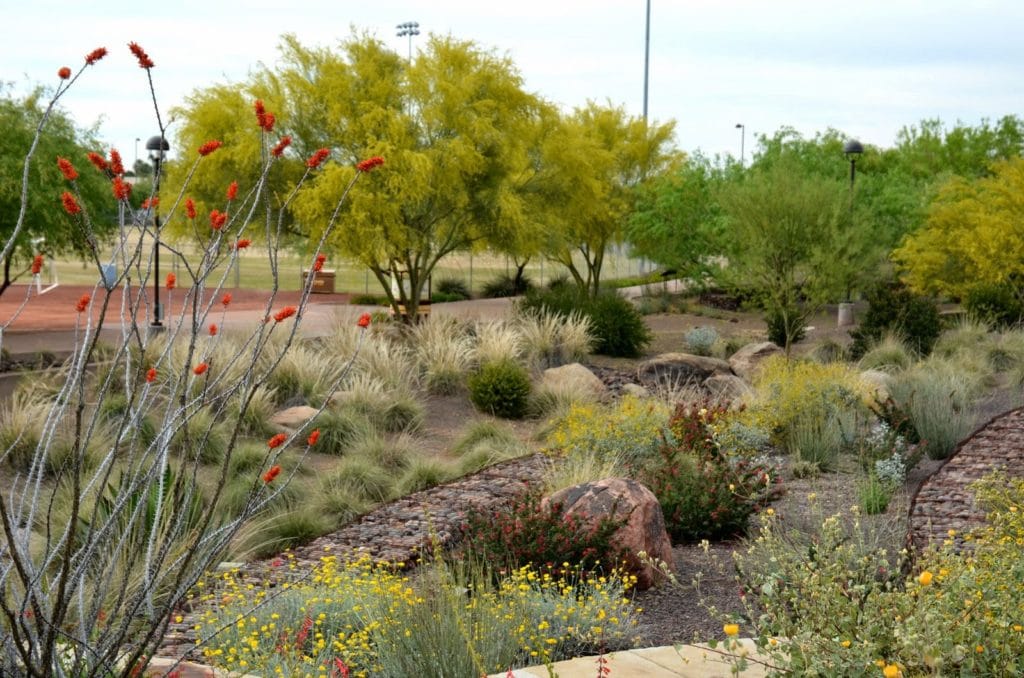
The last stop on our tour of low-water and sustainable gardens was the Scottsdale Xeriscape Demonstration Garden.
The garden is just over 5 acres and sits hidden from the street next to Chaparral Park in central Scottsdale.
Over 200 different types of plants are used throughout the garden, all of which are drought-tolerant and well-adapted to our hot, dry climate.
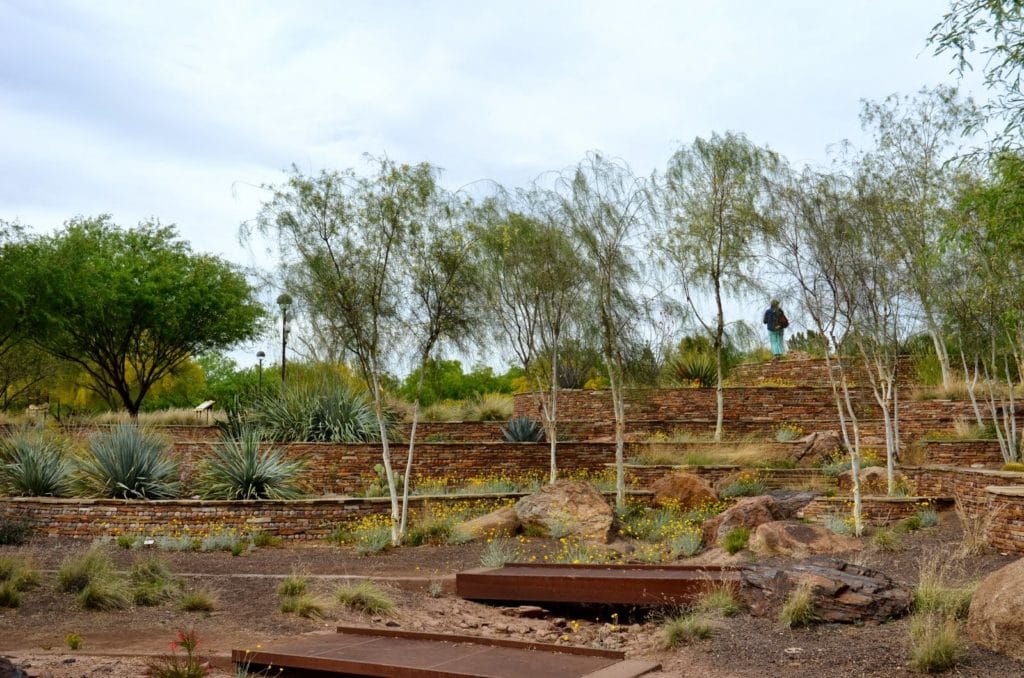
My friend and fellow blogger, Pam Penick, came with me to this beautiful garden (you can see her at the top of the terraced planters).
One of my favorite parts of the garden included this innovative design, called the ‘Terraced Cascade’ which creates the appearance of water traveling down between terraced planters filled with Palo Blanco trees (Acacia willardiana) and Desert Marigold (Baileya multiradiata).
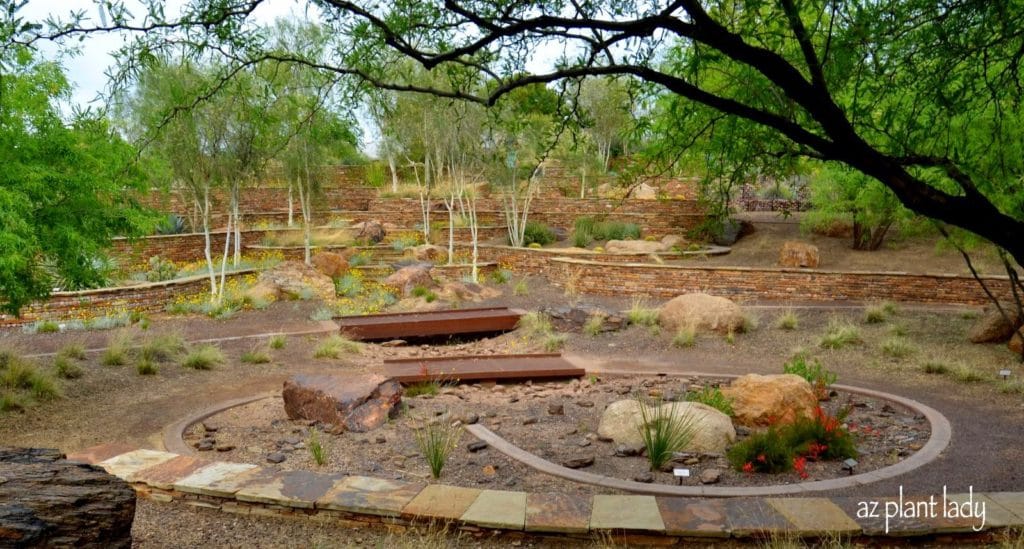
Water does flow down discretely hidden steps between the terraces during times of heavy rainfall toward the water harvest basin where it waters existing plants before flowing underground toward the nearby lake.
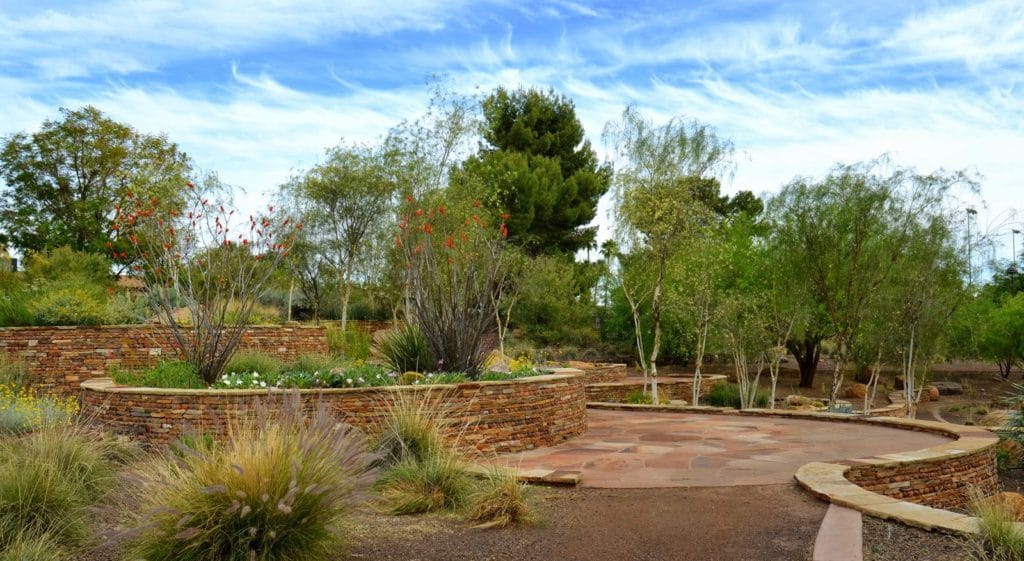
Raised planters were filled with flowering Ocotillo as well as Birdcage Evening Primrose (Oenothera deltoides).
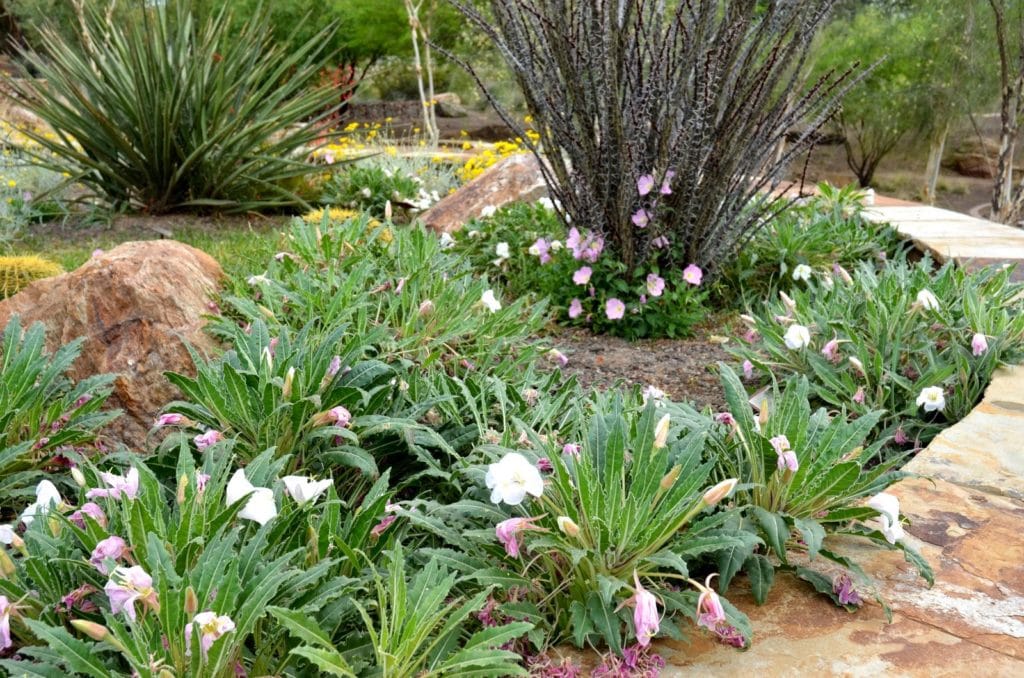
Birdcage Evening Primrose (Oenothera deltoides) in the foreground and Mexican Evening Primrose (Oenothera berlanderi) growing against the Ocotillo.
I must admit that I was surprised to find this garden in an area that I used to spend a lot of time in.
Years ago, before the garden existed, my husband and I would take evening walks around the nearby lake with our daughter. Believe it or not, before there was a garden, there used to be a miniature golf course in this location.
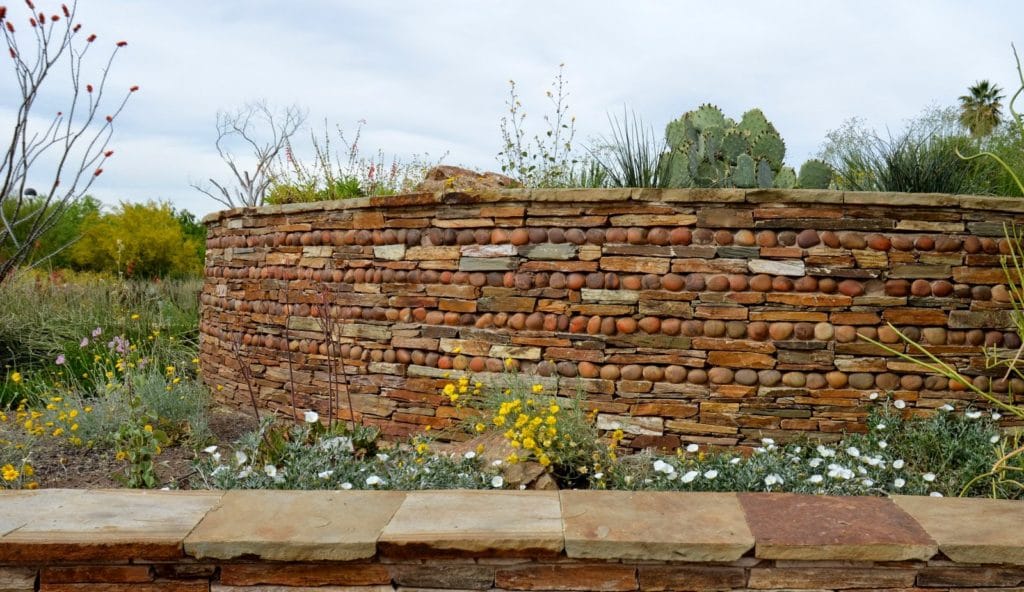
I love stone walls and would have some in my own garden, if I could afford them. The stone walls were capped with flagstone and had rows of round stones, which added an unexpected touch of texture.
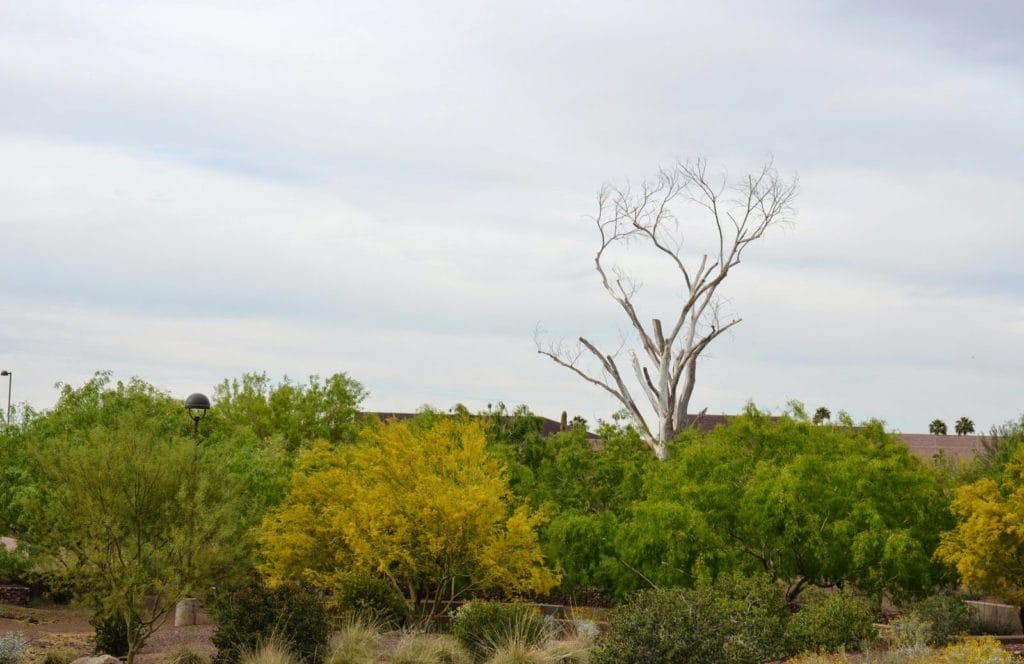
From our vantage point, we could see to the other side of the garden where a tall, dead tree stood. Trees like this are called a ‘snag’, which is a dead or dying tree. This tree provides a home for hawks, which help keep the rabbit population down.
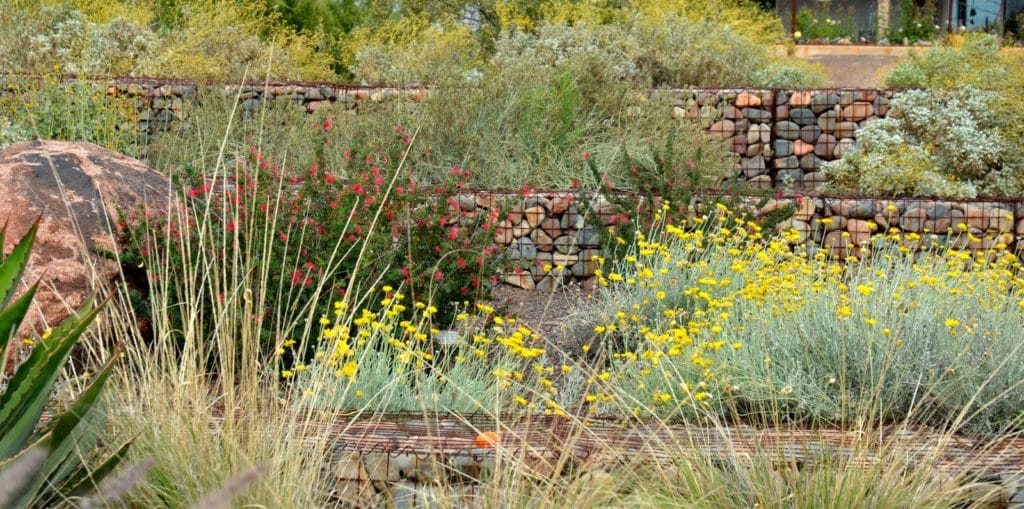
Baja Fairy Duster (Calliandra californica) and Desert Marigold (Baileya multiradiata)
Gabion walls were used along pathways to created terraces to help slow down storm water in order to reduce flooding while watering the plants.
The demonstration garden is located next to a water treatment plant and part of the garden sits on top of a reservoir that contains 5.5 million gallons of treated water.
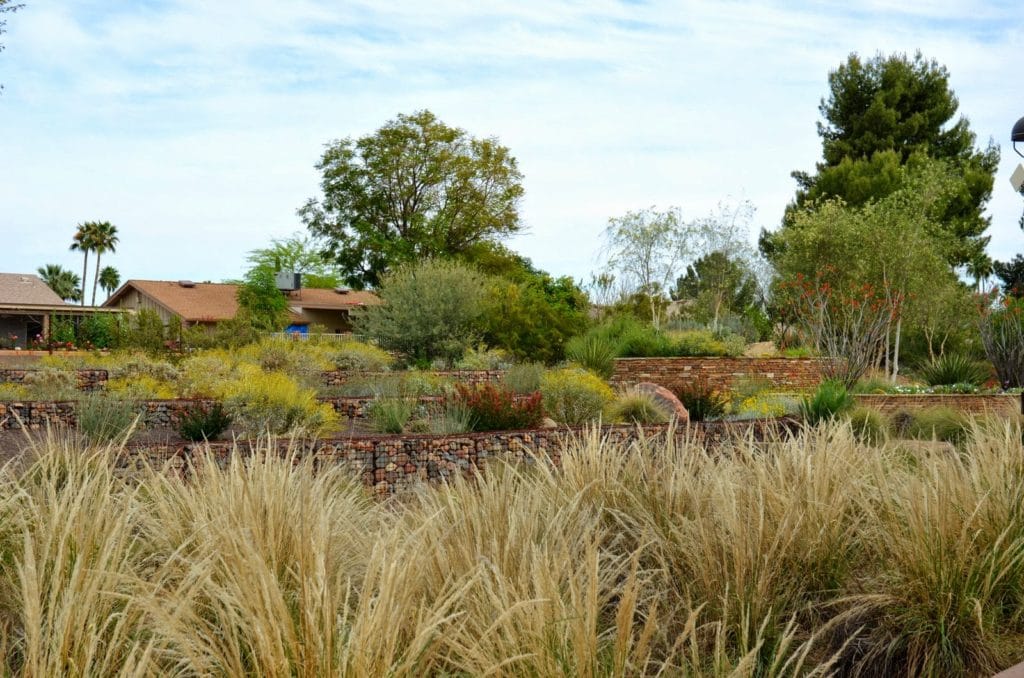
Deer Grass in the foreground.
One of the things that I enjoy about demonstration gardens is that they ‘demonstrate’ different gardening methods as well as showcasing plants.
In this case, I was impressed with the collection of plant species used, which aren’t typically seen in residential or commercial landscapes, which is a shame.
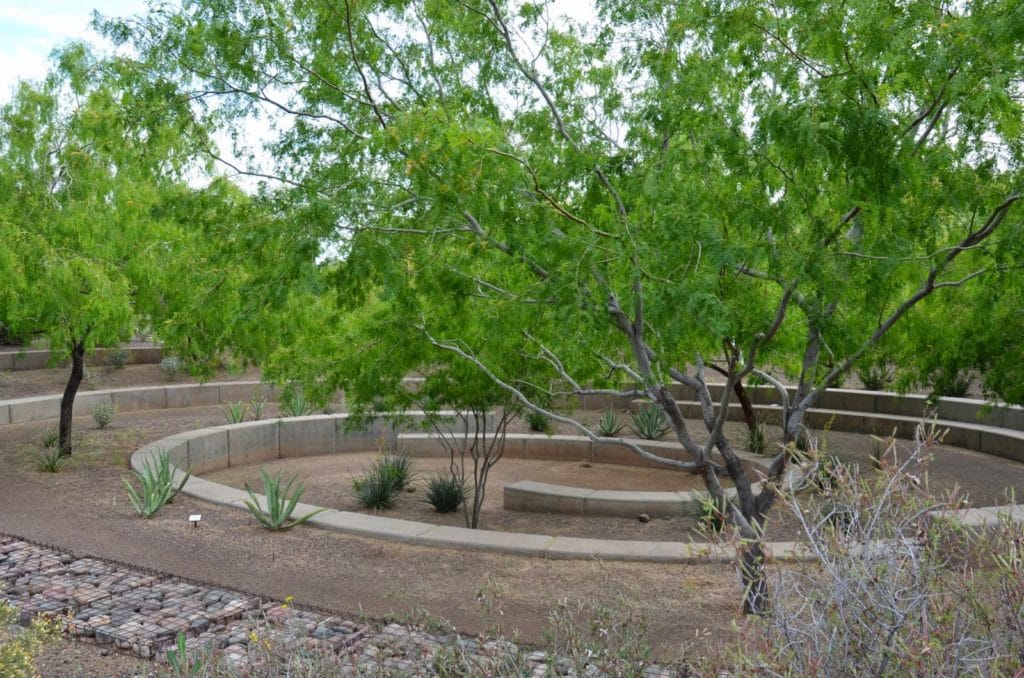
As we walked down the main path, we came upon a man-made, mesquite ‘bosque’. The word ‘bosque’ is used to refer to stands of trees nearby rivers or washes throughout the southwestern United States. Usually, you’ll find these bosques made up of mesquite trees.
This bosque was planted with Honey Mesquite trees (Prosopis glandulosa), which is simply stunning in spring when it’s bright-green leaves reappear. A warning though – it has thorns.
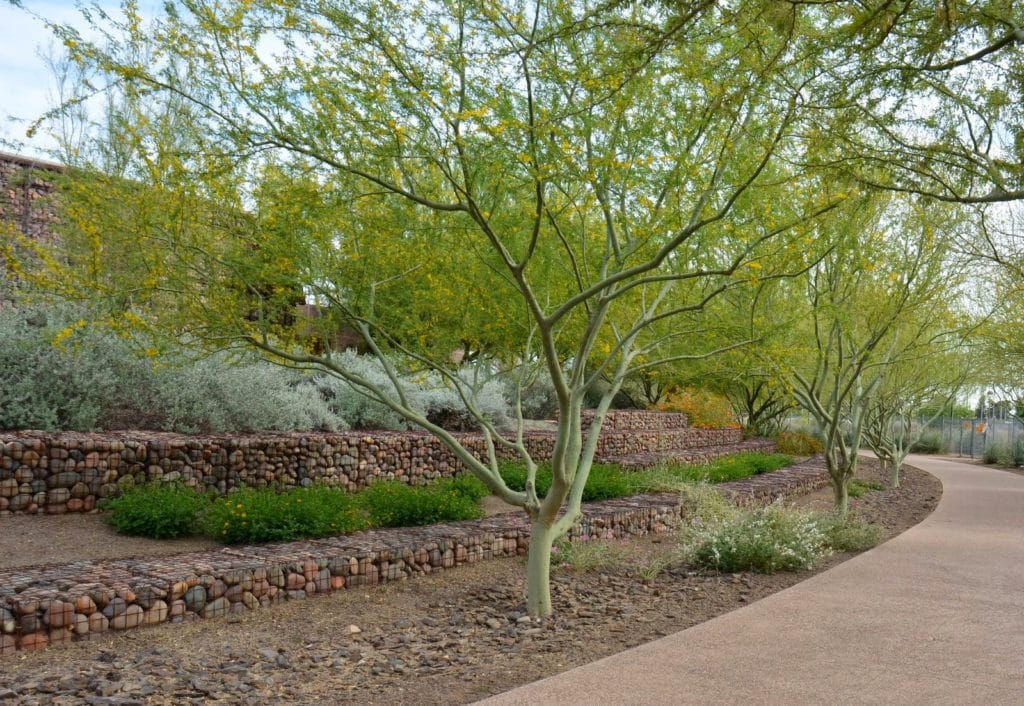
Palo Brea (Parkinsonia praecox) trees and gabion walls line the main walkway.
Plants are maintained just the way I like them – no shearing or over-pruning.
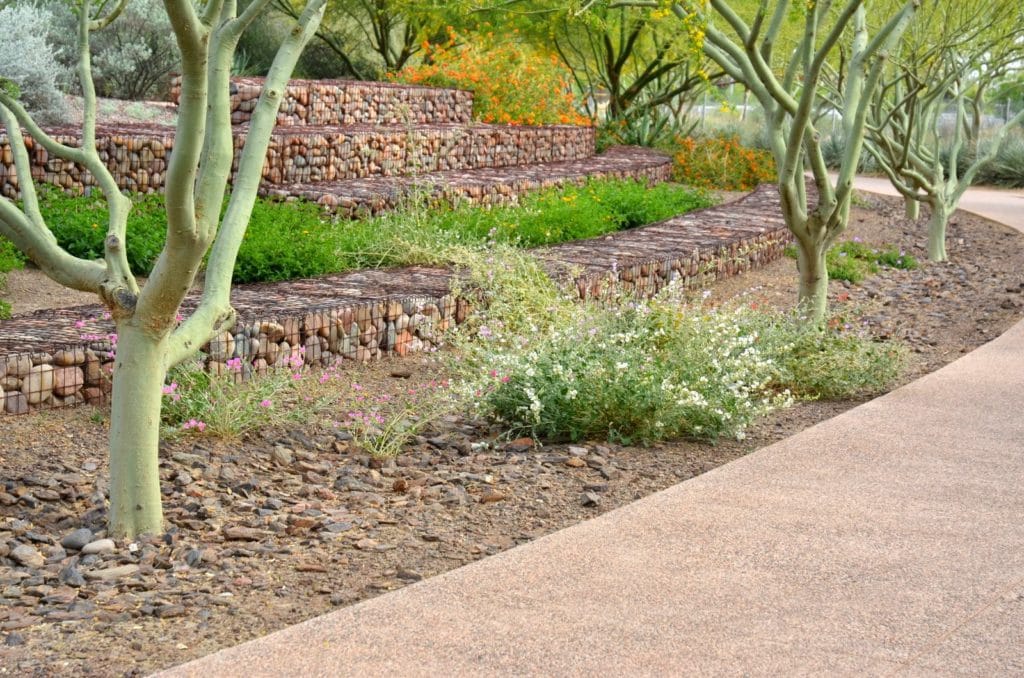
Gold Mound Lantana, Orange Bush Lantana and Pink & White Globe Mallow.
The main pathway parallels the local dog park.
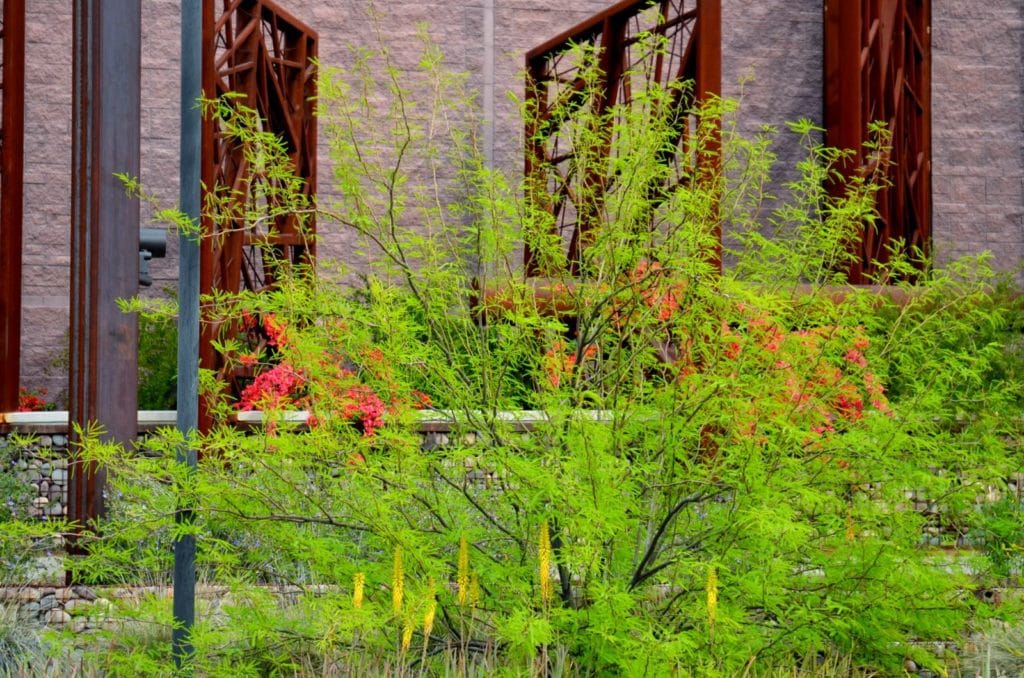
There is little that can compare to the beauty of the new spring leaves of mesquite trees. I love how the coral-colored variety of Bougainvillea and the yellow flowers of Aloe Vera look like brightly-colored jewels along with the leaves of the mesquite.
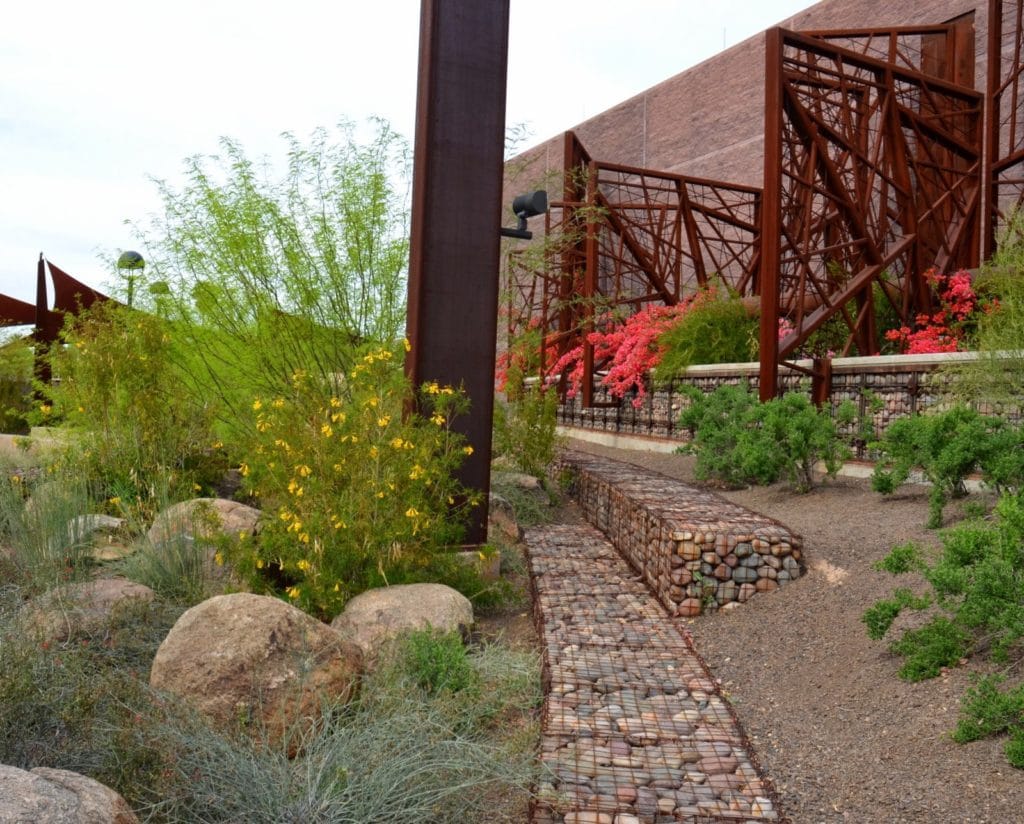
Nearing the end of the trail, I couldn’t help but marvel at this beautiful garden and its creative design.
Throughout the garden were educational signs talking about a myriad of gardening subjects that were clearly illustrated by the garden itself including planning and design, plant care and desert habitat.
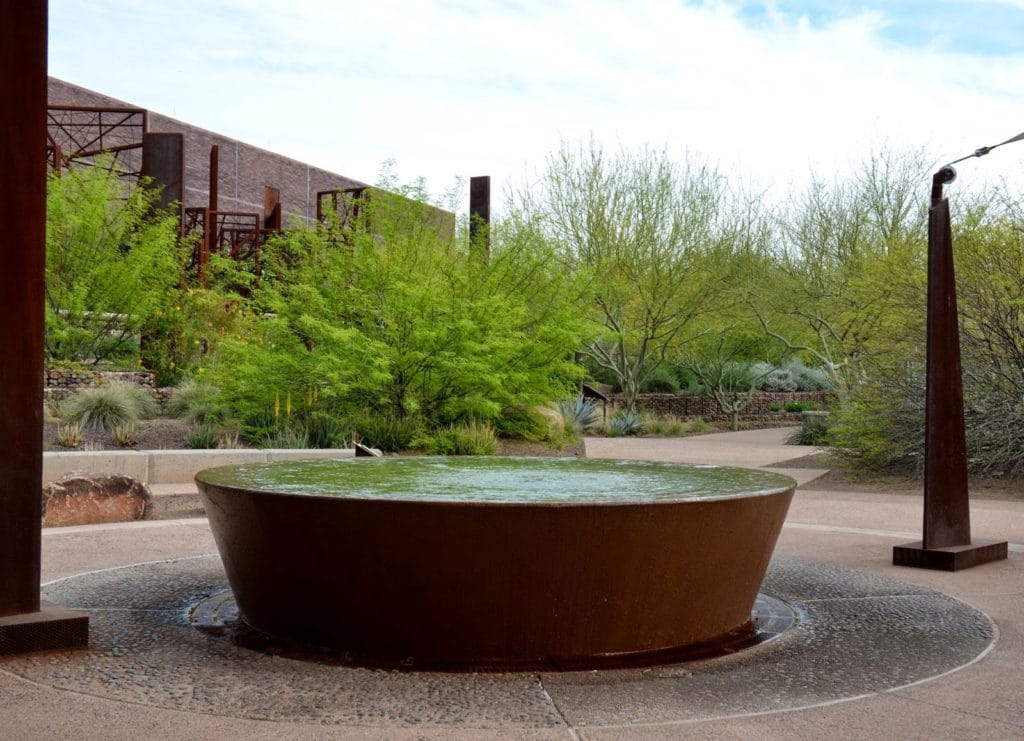
A large cistern was located on one end of the trail, which was filled with the average amount of water that a household uses in 1 week.
Around the outer border of the cistern is an American Indian saying that says:
“THE FROG DOES NOT DRINK UP THE POND IN WHICH HE LIVES”
Those are words that all of us who live in the dry, southwest should all ponder…
*******************
The Scottsdale Xeriscape Demonstration Garden is located at Hayden and McDonald Roads in Scottsdale. It is open from sunrise to 10:30 at night.
I hope you have enjoyed these posts of our tour of sustainable, southwestern landscapes in the greater Phoenix area.
Pam and I drove about 170 miles in one day and we weren’t able to see all of the great examples of sustainable landscaping. However, if you are interested in seeing examples of sustainable gardening, then I would recommend starting at the Desert Botanical Garden, which is filled with arid-adapted plants that thrive in our climate with minimal water and fuss.
If you haven’t visited Pam’s blog, Digging, I encourage you to do so. Many of the plants that she grows in Austin do well in our climate too. Did I also mention that she is an author? She has a fabulous book called Lawn Gone!: Low-Maintenance, Sustainable, Attractive Alternatives for Your Yard, which I highly recommend.

 Noelle Johnson, aka, 'AZ Plant Lady' is a author, horticulturist, and landscape consultant who helps people learn how to create, grow, and maintain beautiful desert gardens that thrive in a hot, dry climate. She does this through her consulting services, her online class Desert Gardening 101, and her monthly membership club, Through the Garden Gate. As she likes to tell desert-dwellers, "Gardening in the desert isn't hard, but it is different."
Noelle Johnson, aka, 'AZ Plant Lady' is a author, horticulturist, and landscape consultant who helps people learn how to create, grow, and maintain beautiful desert gardens that thrive in a hot, dry climate. She does this through her consulting services, her online class Desert Gardening 101, and her monthly membership club, Through the Garden Gate. As she likes to tell desert-dwellers, "Gardening in the desert isn't hard, but it is different."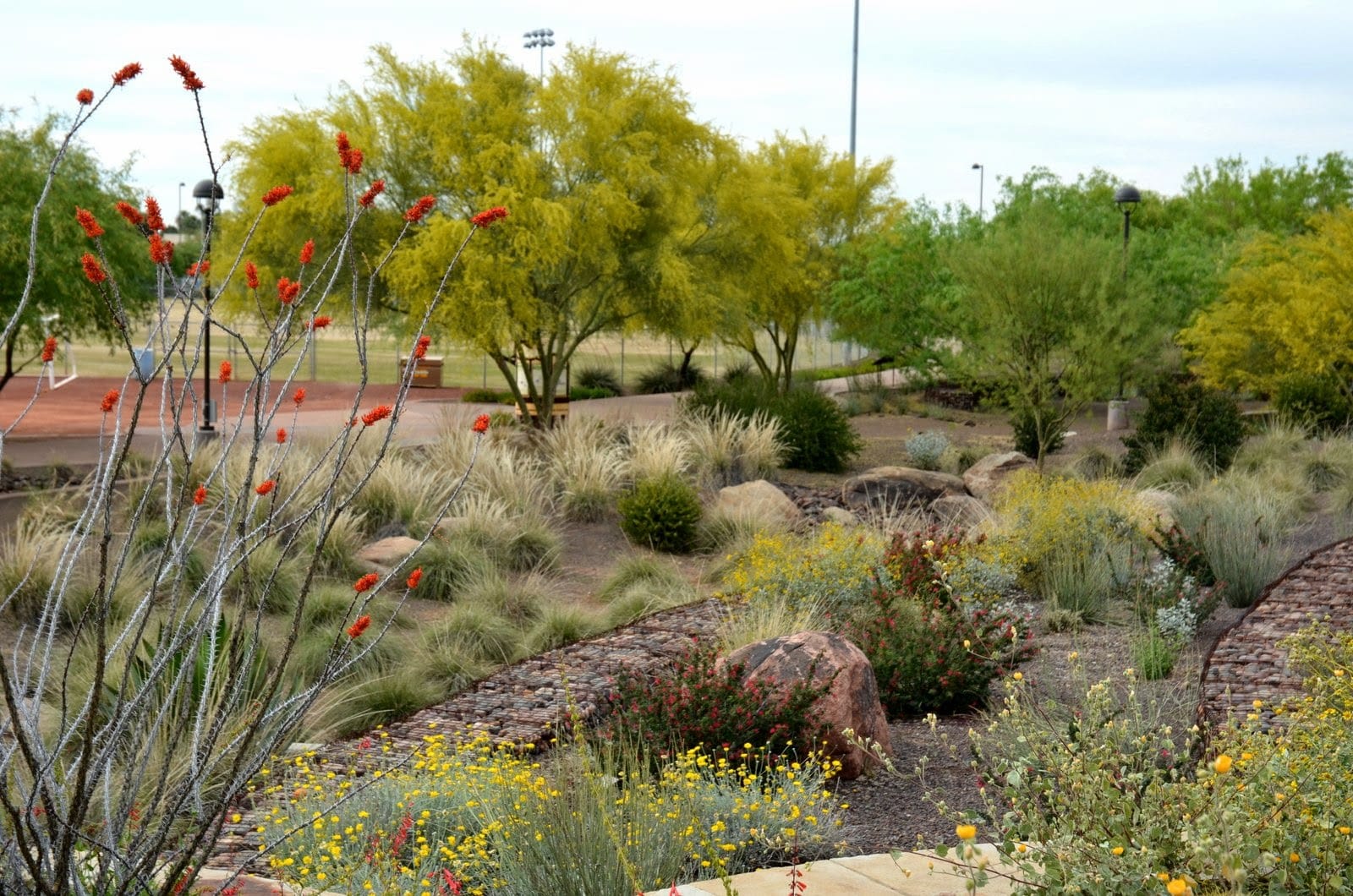
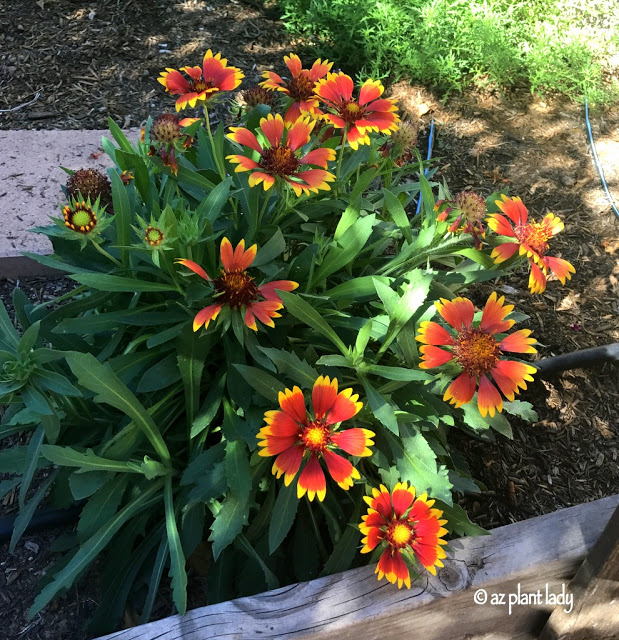
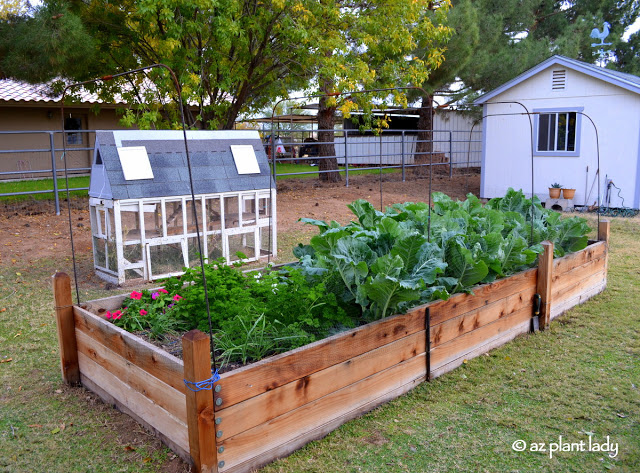
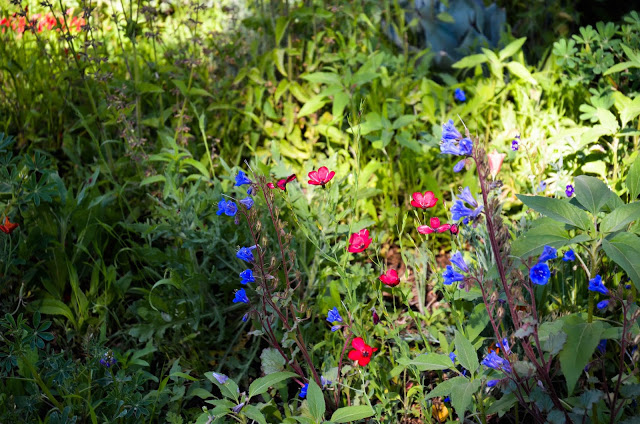
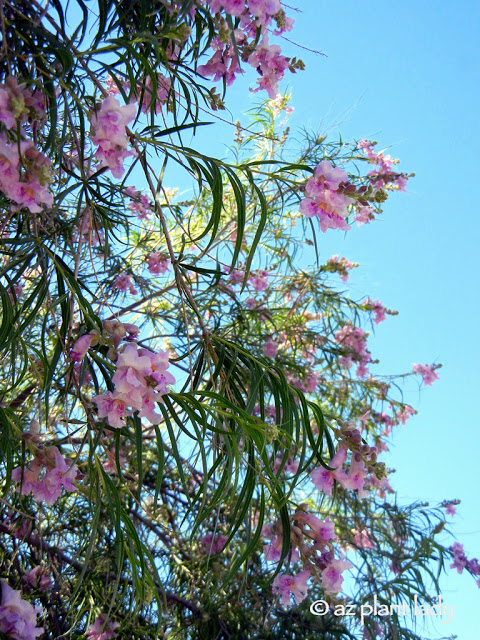
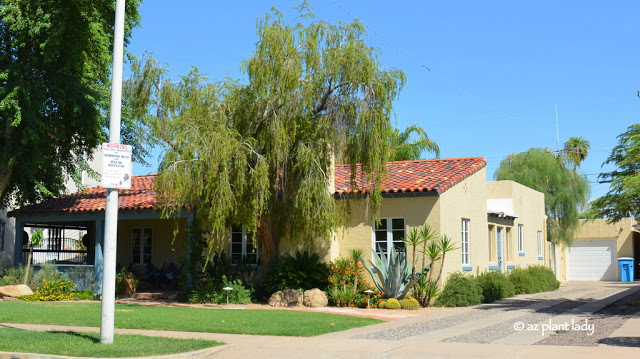









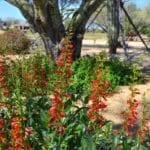
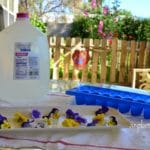
Great post, Noelle. I hope to visit this demonstration garden if I'm ever in the Phoenix area!
I need to search out my photos of this place, when I first visited several years ago! I forgot about the wall with the round rocks inset…jealous of you and Pam seeing all that, as well as what else you spotted on that 170+ mile drive but couldn't stop for. A jewel to be sure!
I love this series on sustainable landscapes. They are so beautiful and inspirational! Thanks Noelle!
much enjoyed seeing this garden thru both Pam's eyes, and yours. Wish I could be there too!